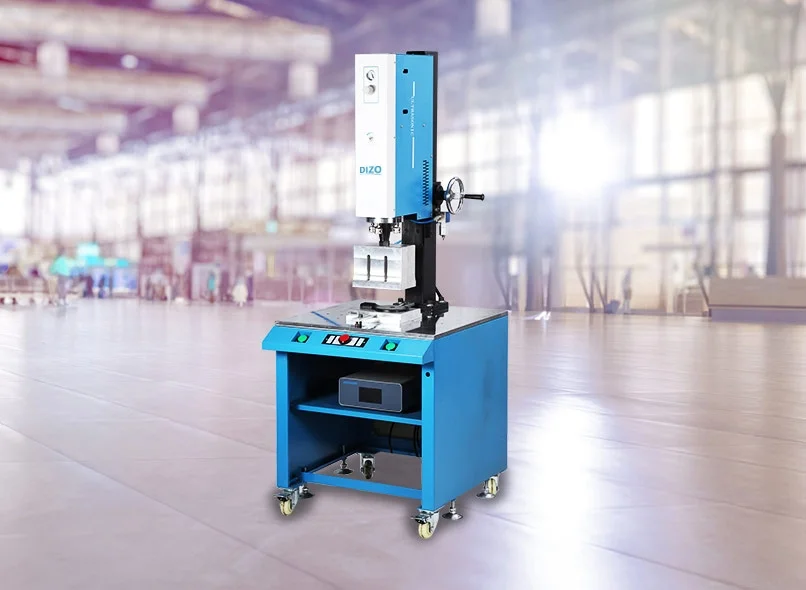Ultrasonic welding has become one of the go-to methods in advanced manufacturing for bonding thermoplastics and metals. It’s quick, energy-efficient, and doesn't rely on adhesives or fasteners. If you work in automotive, electronics, medical devices, or packaging, there’s a good chance you’re already seeing the results of this technology—whether you realise it or not.
What is ultrasonic welding?
Ultrasonic welding uses high-frequency vibrations (typically between 20 kHz and 40 kHz) to generate heat through friction. This heat melts the material at the joining point. Pressure is applied to fuse the components together as they cool.
It’s mostly used for thermoplastics and some non-ferrous metals. Unlike other methods, ultrasonic welding doesn’t require bolts, nails, or solvents, making it an environmentally cleaner and faster option.
Advantages of ultrasonic welding
There are several key benefits that make ultrasonic welding a preferred method:
1. Speed
Ultrasonic welding takes just seconds. There's no curing or drying time. This high throughput suits automated production lines where consistency is vital.
2. Clean process
Since no solvents, adhesives, or consumables are needed, there’s no mess. The process doesn’t emit fumes or harmful by-products either.
3. Strong joints
Properly welded parts have excellent mechanical strength, often as strong as the parent material.
4. Energy efficient
Ultrasonic welding uses far less energy than methods like laser or thermal welding. The energy is focused only on the joint area, which also reduces distortion.
5. Compact equipment
The plastic welding equipment required is relatively small and easy to integrate into production lines.
Common applications
Ultrasonic welding isn’t just for large industrial applications. It’s used in a wide variety of sectors, including:
Automotive
-
Welding dashboards, door panels, and interior trims
-
Bonding electrical components and sensors
Electronics
-
Solderless connections in circuit boards
-
Cable splicing and wire harness assemblies
Medical
-
Sealing sterile medical packaging
-
Assembling IV catheters, filters, and face masks
Packaging
-
Creating hermetic seals on food and drink containers
-
Blister packs for pharmaceuticals
Each of these uses benefits from the method’s precision, speed, and cleanliness.
Key components of an ultrasonic welding system
Understanding the basic setup helps explain the process more clearly.
-
Generator – Converts standard electrical current into high-frequency ultrasonic signals.
-
Converter (Transducer) – Converts electrical energy into mechanical vibrations.
-
Booster – Modifies amplitude and transmits vibrations.
-
Horn (Sonotrode) – Contacts the workpiece and delivers ultrasonic energy.
-
Fixture (Anvil) – Holds the second part in place during welding.
Each part of the system needs to be matched precisely for optimal performance.
Critical considerations for effective welding
To get consistent results from ultrasonic welding, certain factors need to be controlled:
-
Material compatibility: Both parts should have similar melting points.
-
Joint design: Special geometries like energy directors can improve weld strength.
-
Amplitude and pressure: These settings must be tuned based on material and thickness.
-
Time and vibration frequency: Higher frequencies are better for delicate parts.
If you get these factors wrong, the weld can be weak, incomplete, or even damage the parts.
Limitations and challenges
Ultrasonic welding, while effective, isn't suitable for every job.
-
Material restriction: Not all plastics and metals are suitable—materials need good acoustic properties.
-
Size limitations: Very large parts may be difficult to weld without special setups.
-
Tooling cost: Initial tooling for new parts can be costly, especially for custom horns.
-
Precision required: The process requires tight tolerances in part design and alignment.
Still, when designed correctly, ultrasonic welding provides a solid return on investment.
Innovations in ultrasonic welding
Recent advancements have made ultrasonic welding more flexible and intelligent.
Automation and robotics
New systems integrate with robotic arms and conveyor systems for seamless production.
Smart sensors and AI
Real-time quality control is now possible using sensors that monitor parameters like force, amplitude, and displacement.
Welding of dissimilar materials
Advanced systems allow bonding of materials with different acoustic properties—an area that was once difficult.
Micro-welding
For microelectronics and small medical devices, miniaturised ultrasonic welders are gaining traction. They offer micron-level precision and minimal thermal stress.
These changes are expanding the potential uses of ultrasonic welding beyond traditional roles.
Ultrasonic welding vs. other methods
Let’s look at how it compares to other common joining techniques:
| Method | Speed | Cleanliness | Consumables Required | Energy Use | Suitability for Automation |
|---|---|---|---|---|---|
| Ultrasonic welding | Very Fast | Very High | None | Low | Excellent |
| Heat staking | Medium | Medium | Sometimes | Medium | Good |
| Adhesive bonding | Slow | Low | Adhesives | Medium | Fair |
| Laser welding | Fast | High | None | High | Excellent |
| Mechanical fasteners | Medium | Low | Screws, Rivets | Medium | Poor |
Ultrasonic welding stands out where cleanliness, speed, and automation are priorities.
Environmental and economic impact
Manufacturers are under pressure to reduce their environmental footprint and operating costs. Ultrasonic welding helps address both:
-
No emissions or solvent use
-
Low electrical consumption
-
Minimal material waste
-
Less equipment maintenance
It also helps companies meet sustainability targets, particularly in packaging and consumer goods.
Safety in ultrasonic welding
While it’s generally safe, ultrasonic welding still requires safety protocols:
-
Hearing protection: High-frequency sound may be inaudible but still harmful.
-
Shielding: Moving parts should be enclosed.
-
Training: Operators need instruction on setup and monitoring to avoid hazards.
Newer machines often include safety interlocks and sensors that detect misalignment or material issues.
Is ultrasonic welding right for your operation?
To determine if it fits, consider:
-
Do your parts involve compatible plastics or soft metals?
-
Is high-volume production a goal?
-
Do your designs require clean or hygienic assembly?
-
Is minimising cycle time important?
If the answer to these is yes, ultrasonic welding may offer significant advantages.







